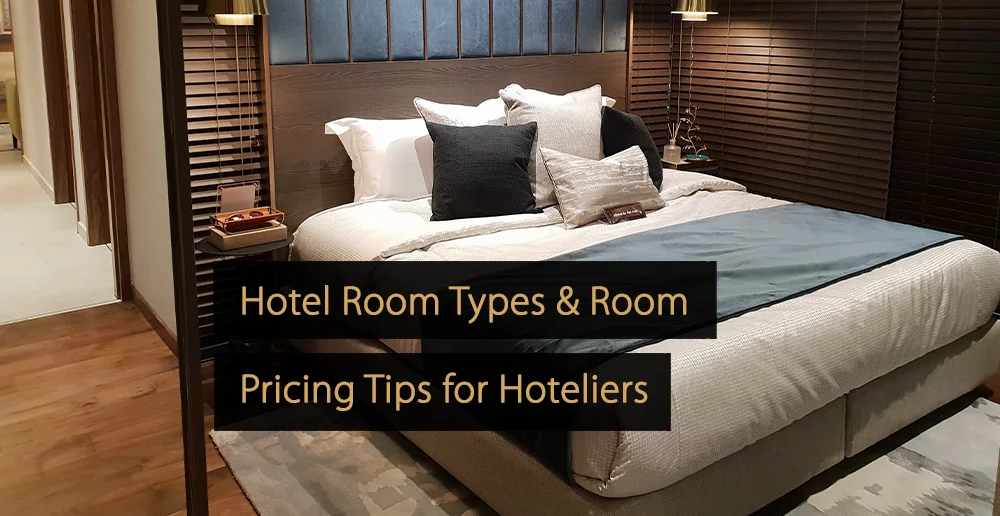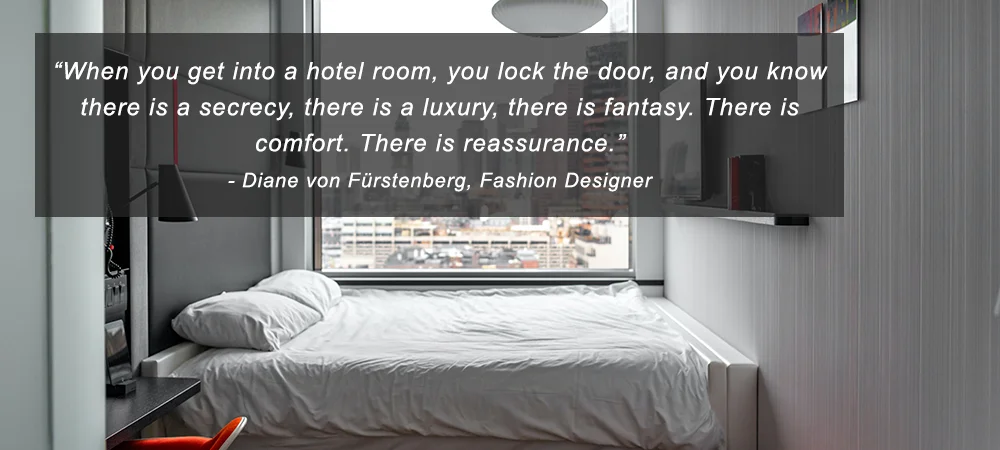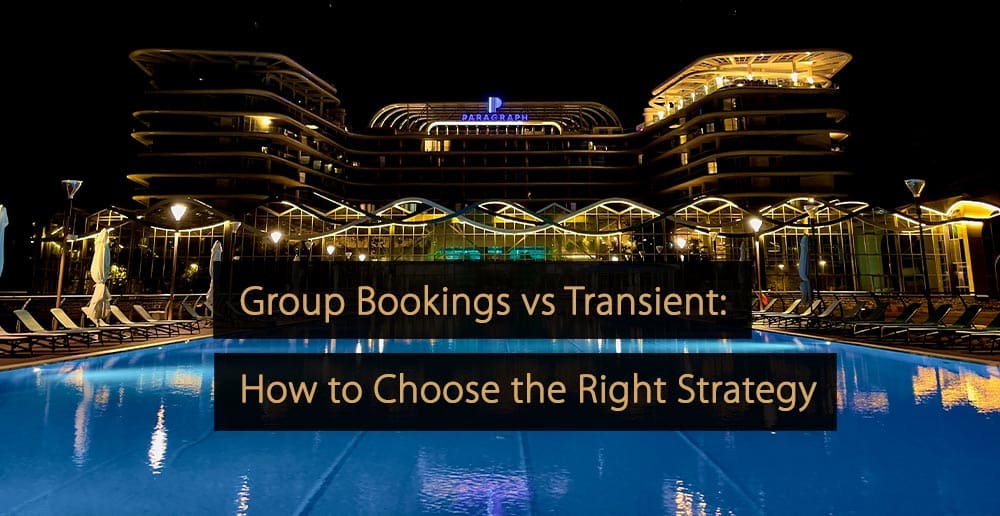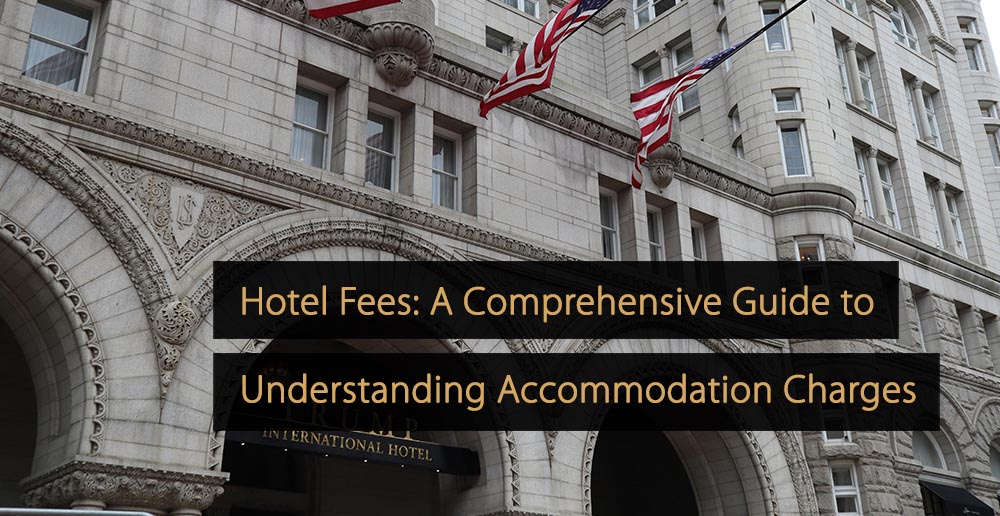Deciding what kinds of accommodation to offer your guests can be complex. In this article, you’ll learn about the different types of hotel rooms, how they’re categorized, and what types of guests they may attract. You’ll learn about room categories based on use, number of occupants, and purpose, as well as pricing strategies for every room type.
Table of Contents:
- What Is the Hotel Industry?
- The Necessity of Different Hotel Room Types
- Most Common Hotel Room Types
- What Is Revenue Management?
- 4 Room Type Pricing Strategies to Increase Revenue
- Hotel Room Types In Your Hotel Marketing Plans
- Understanding Types of Hotel Guests for Better Hotel Room Type Allocation
What Is the Hotel Industry?
The hotel industry is part of the broader hospitality industry that focuses on providing accommodation to travelers. The industry forms a crucial part of the worldwide tourism industry. It’s a massive contributor to the worldwide economy, supporting millions of jobs at all levels and across different hotel departments, and generating trillions of dollars in revenue.
A hotel, meaning a business providing overnight accommodation, can be anything from a cozy inn to a sprawling luxury resort, with many different hotel rooms. You can look at the hotel industry in terms of different segments, such as budget hotels, mid-range hotels, and luxury hotels.
In “Hotel Industry: Everything You Need to Know About Hotels!“, you’ll learn everything you need to know about this fascinating industry. You’ll discover the many different kinds of hotels that operate today and how they’re meeting the changing needs of travelers.
The Necessity of Different Hotel Room Types
Different travelers can have radically different needs when it comes to rooms. A business traveler might want a quiet multi-use space that can serve as an office as well as a place to relax. A family might need multiple beds and lots of entertainment options. Travelers have different budgets and different requirements.
Hotels need to identify their target demographics and make sure that the room types they offer will meet the needs of the guests they’re likely to attract. The types of hotel rooms that a property offers will depend on a range of factors: location, the services that the hotel delivers, the target client base, and so on.
Most Common Hotel Room Types
In this section, you’ll take a look at some of the most common types of hotel rooms, their characteristics, and the type of guest who might choose them.
Hotel Rooms Types Based on Occupancy
Below, you can find hotel room types that are based on occupancy type.
Single Room
A single room is intended for a solo occupant. It will have one bed, typically 3 by 6 feet. An extra bed can be added for a surcharge. Single rooms are less common nowadays. It’s more efficient for a hotel to provide twin and double rooms, with a lower charge if there’s one occupant.
Twin Room
A twin room is a single room with two beds. These smaller rooms are ideal for people traveling together who want to save money while still maintaining personal space. An extra bed may be added to a twin room, allowing a third guest to sleep there for an additional fee.
Double Room
A double room is a larger room with a double bed. It’s intended for two guests who will be sharing a bed. The bed will typically be queen or king-sized. These rooms are intended for co-sleeping and are ideal for couples.
Triple Room
A triple room is set up to accommodate three guests, such as parents traveling with a child. It may have three separate beds; two doubles or one double, and a single is more typical. Triple rooms will be larger than doubles, and some triple rooms have a single bed in a separate smaller room.
Quadruple Room
A quadruple or quad room is intended for four guests. It will usually have four single beds or two double beds. In some cases, a quad room will be a dormitory-style space with bunk beds. The hotel should be clear on the sleeping arrangements to avoid disappointment or inconvenience to guests.
Hotel Room Types Based on Bed Type
Another way that hotels can categorize their room types is by the kind of bed provided. A standard room might contain one queen-sized bed. In this instance, it will often be called a queen room and may have one or two occupants.
A room with a king-size bed will be called a king room; again, this may have one occupant but will generally be occupied by a couple. Under this type of categorization, a double room will have two double or queen-size beds. These are ideal for families with small children.
Hotel Room Types Based on Room Layout
Types of hotel rooms can also be categorized by the way the room is arranged — the layout. Here are some of the most common room layouts and what they mean.
Studio Room
A studio room is essentially a fully furnished mini apartment. The living area and bedroom are combined in a single space, which will generally contain a kitchenette. The bed will be convertible, turning into a sofa or folding up during the day. Studio rooms are often L-shaped, with the sleeping area at one end.
Duplex
A duplex suite consists of two rooms located on separate floors and joined by an internal staircase. A duplex is an ideal solution for the business traveler who needs an office for work and meetings as well as a bedroom and living area. They are generally found in luxury hotels.
Deluxe Room
A deluxe room is larger and better appointed than a typical hotel room. They’ll often include a full bath or even a hot tub or whirlpool bath, as well as other upscale amenities. Deluxe rooms often include balconies or private terraces and may be situated to command a desirable view.
Comfort Room
A comfort room is a budget-friendly hotel room type, with a focus on relaxation and the most important comforts. Typically, a comfort room will provide a pleasant atmosphere, a comfortable bed, private bathroom facilities and some extras, making it a great option for guests who want somewhere peaceful to return to after a long day.
Suite
A suite is usually a set of connecting rooms with different functions. In some cases, it may be an exceptionally spacious single room that has defined sleeping and living areas. A suite will almost always boast high-end decor, amenities, and hotel technology, as they are aimed at guests in the market for luxury.
Executive Room
An executive room is a premium hotel room type, with enhanced amenities, targeted towards corporate travelers. An emphasis is placed on comfort and providing the right ambiance for focused work. In some hotels, booking an executive room also provides access to faster check-ins and exclusive meeting rooms, shared workspaces or lounges.
Junior Suite
A junior suite is similar to a standard suite but smaller in size. It is less likely to comprise separate rooms but will have a layout that demarcates the sitting and sleeping areas. Like a standard suite, it will be very well-appointed and have high-end decor.
Presidential Suite
Presidential suites are some of the hotel’s finest and most impressive quarters. There will usually be just one or two such suites at any property. They will be larger than standard suites and will comprise at least two separate rooms. They will be lavishly decorated and boast a range of high-end amenities.
Penthouse Suite
A penthouse suite is on the topmost floor of the hotel. It will be very large – indeed, it may occupy the entire floor. A penthouse will often be the most expensive and exclusive suite in the hotel. They commonly have a private lift requiring a key card to access the floor.
Bridal Suite
A bridal suite is a large and open room with a flexible layout. They’re designed for brides who will be getting their hair and makeup done in the room, requiring lots of space for friends and bridesmaids to gather and help the bride get ready for her big day.
Video: Bridal Suite
Honeymoon Suite
A honeymoon suite is designed to create an atmosphere of romance. As well as appropriate decor, a honeymoon suite implies a range of special services that newlyweds will appreciate: fresh flowers, champagne, chocolates, and other items may be ready in the room, and private dining may be available.
Cabana
A cabana is a large hotel room that may open onto a hotel pool, or even have its own private pool. Some cabanas may also be beach-front rooms with access to the ocean and may have terraces or balconies that open onto the beach. They will be well-appointed with luxurious decor and furnishings.
Villa
A villa is less a room and more an independent building. They’re typically situated in a secluded area, either within the grounds of a hotel or in the countryside. Villas are aimed at guests who want a peaceful escape from the rest of the world. They will be well-appointed with many amenities.
What Is Revenue Management?
In a dynamic and challenging industry, being able to predict future demand and plan accordingly has never been more vital. As well as being important in itself, showing that you can accurately predict demand and maximize revenue from your hotel business can help secure hotel financing for new projects and expansions.
You need to know how many guests you can expect in a given period, the kinds of guests who will want to stay at your hotel, and the types of hotel rooms they’ll be looking for. You’ll also need to apply dynamic pricing, modifying your room rates in response to fluctuating demand.
Revenue management for hotels is the process of taking data from a range of sources and analyzing it to create actionable predictions, optimize pricing, and maximize your hotel revenue. In “Revenue Management: clearly explained!“, you’ll learn everything a hotelier needs to know about revenue management.
Video: Revenue Management – the science of ultimate hotel success
4 Room Type Pricing Strategies to Increase Revenue
Here are four of the most effective room pricing strategies you can implement to boost your hotel’s revenue.
Open Pricing
Open pricing lets hotels target different groups of customers across a range of budgets, increasing occupation levels and boosting hotel revenue year-round. Open pricing allows you to pitch your rates for rooms and other services at the optimal level to draw in guests while maintaining quality.
Open pricing uses a range of different rates on a curve that reflects demand. This means that a hotel never misses out on a potential guest, while never selling a room too cheaply. In “Open Pricing: Why Is It the Next Hotel Revenue Management Strategy“, you’ll learn how open pricing works and why it might be the right choice for you.
Value-Added Pricing
Value-added pricing is referred to as value-based pricing. It’s a strategy that involves discovering what guests think a room is worth and pricing it accordingly. Value-added pricing usually involves establishing the average or break-even rate for each room, and then setting the price based on what guests will be willing to pay.
For value-added pricing to work effectively, you need to protect your hotel’s reputation and cultivate your brand. Because value-added pricing is all about a customer’s perception of worth, you must take pains to ensure that your hotel offers value for prospective guests. Everything from branding to housekeeping duties needs to support your reputation.
Segment Room Type Pricing Based on Hotel Guest Type
This strategy is based on pricing rooms based on the market segment that will typically be booking those rooms. Any given room can be sold to guests from different market segments at different prices. This will require detailed knowledge of the types of guests who visit your hotel, what services they’re likely to use, and how much revenue they will bring in.
You will need to know the ages of your guests, their main reason for traveling, the locations they come from, and their class or lifestyle. To find out more about this pricing strategy, read “Hotel Market Segmentation: Effective Tips & Strategies for Hoteliers“.
Length of Stay Pricing
Length of stay pricing involves adjusting your room prices based on how long the guest will be staying. It’s a great strategy for increasing occupancy when business is slower, such as in the off-season or during the week.
By offering guests a discount if they book more than a specific number of days, you can boost occupancy rates and encourage more guests to visit your hotel. You might offer this kind of discount for all rooms, or just for those types of hotel rooms that are likely to be rented for longer stays: apartments, villas, etc.
Hotel Room Types In Your Hotel Marketing Plans
The marketing department is as important to success as hotel maintenance. A hotel marketing plan is a crucial document if you want to develop and implement a successful marketing strategy. By laying out your objectives and creating a roadmap for achieving them, a hotel marketing plan will ensure that your marketing strategy is well-crafted and effective.
To learn more about developing a hotel marketing plan, read “Hotel Marketing Plan: Tips & Tricks for Successful Hotel Marketing“. You’ll discover what a marketing plan involves and how to create one. You’ll find out how to identify your hotel’s unique selling point and leverage it, as well as other vital tips.
Understanding Types of Hotel Guests for Better Hotel Room Type Allocation
Understanding the different types of guests and what they’re looking for in a hotel is vital if you want to run a successful hotel business. Whether you want to increase the number of guests from the demographics you currently serve or expand into other markets, you’ll need a thorough understanding of your current and potential future guests.
You’ll need to know what their backgrounds are, what kind of budget they’re likely to be working with, and what they want from a hotel stay. In “Different Types of Hotel Guests and Tips on How to Appeal to Them“, you’ll learn everything you need to know about different types of guests and how to get them to choose your hotel. You’ll also gain valuable insight into ways you can exceed expectations for every customer.
Hotel Room Types FAQs
Understanding the different types of hotel rooms and the prices they can command is a key element of creating a successful hotel business. By providing the accommodation your guests want, you can attract more customers and optimize your revenue.
More Tips to Grow Your Business
Revfine.com is the leading knowledge platform for the hospitality and travel industry. Professionals use our insights, strategies, and actionable tips to get inspired, optimize revenue, innovate processes, and improve customer experience.Explore expert advice on management, marketing, revenue management, operations, software, and technology in our dedicated Hotel, Hospitality, and Travel & Tourism categories.
This article is written by:
Hi, I am Martijn Barten, founder of Revfine.com. With 20 years of experience in the hospitality industry, I specialize in optimizing revenue by combining revenue management with marketing strategies. I have successfully developed, implemented, and managed revenue management and marketing strategies for individual properties and multi-property portfolios.










Leave A Comment